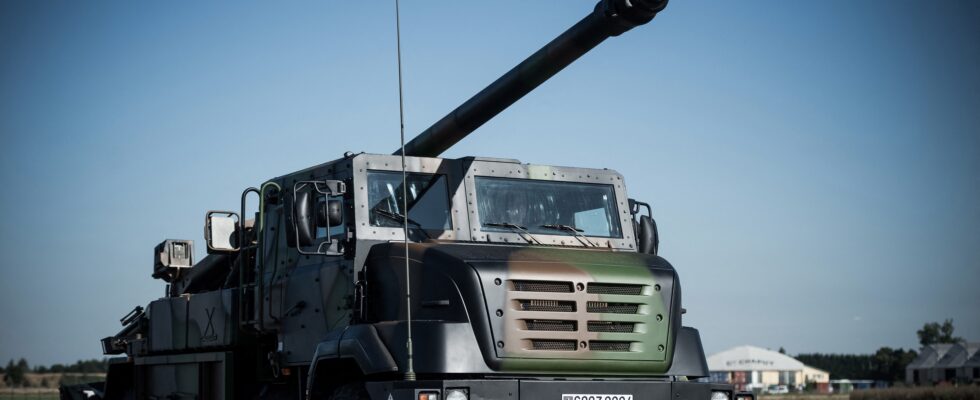France is ready to finance twelve additional Caesar cannons for Ukraine, calling on its allies to make an effort to pay for 60 more and thus strengthen Kiev’s capabilities against Russia, she announced Thursday. “I have decided to release a sum of 50 million euros” – from the French support fund for Ukraine – “which will make it possible to purchase twelve Caesar cannons”, declared the French Minister of the Armed Forces , Sébastien Lecornu, during the launch in Paris of an “artillery coalition” attended by his Ukrainian counterpart by videoconference.
These twelve Caesars, produced by Nexter (Franco-German group KNDS), will be added to the 49 already deployed in Ukraine and the six ordered which must be delivered “in the coming weeks”, according to the ministry. France has the capacity to produce 60 more, according to the minister, or some 250 million euros, “a sum which seems to me to be accessible for the various budgets of the allies”, he continued. in front of representatives of 23 countries supporting Ukraine’s defense.
“There is no alternative to modern artillery, we must continue our efforts and increase our production of munitions”, declared from Ukraine the Minister of Defense Roustem Oumerov who canceled during the night his coming to the French capital “for security reasons”. The artillery “coalition”, led by France and the United States, is one of the components of the contact group for the defense of Ukraine known as the Ramstein group, bringing together more than 50 countries in several subgroups, from air defense mine clearance.
Ammunition
“The big challenge for Ukraine is to complete its transition from Soviet equipment to Western equipment”, according to NATO standards, believes international risks consultant Stéphane Audrand. Soviet-era guns are fitted with 122mm shells, while Western systems use 155mm shells. To arm the cannons, the EU has set itself the objective of supplying Ukraine with one million munitions by spring 2024. But only 300,000 shells have been delivered to date, according to European parliamentarians.
On the French side, Mr. Lecornu welcomed on Thursday a tripling of French munitions deliveries to Ukraine, from 1,000 units per month to 2,000 during the first year of war, and which should increase to 3,000 shells from January.
“We are in the process of getting our hands back on stocks of powder. We are recycling powder on ammunition that has not been used,” he told journalists. However, these quantities are only enough for a few days of combat, according to experts, who estimate Ukrainian consumption on the battlefield at around 200,000 shells per month. The minister also announced the delivery of around fifty A2SM surface-to-air missiles per month from January, throughout the year. Medium-range, they will be able to adapt to “Soviet-class” aircraft such as Migs and Sukhoi, which Ukraine uses, he assured.
France and European countries are “not up to par” with the expectations of Ukraine, which urgently needs ammunition, French senators deplored Wednesday in a report, urging kyiv’s allies to “change scale” and increase their production.
A frozen front in Ukraine
France has already ceded or sold 30 Caesars to Ukraine, which had ordered six additional ones in the fall. Denmark also supplied 19 examples of an eight-wheeled armored version. Mounted on a truck, the Caesar can fire 155mm shells up to 40 kilometers away. French President Emmanuel Macron on Tuesday reiterated his support for kyiv, whose latest military counter-offensive did not produce the expected results. He also announced that he would visit Ukraine in February, for the second time since the start of the war in February 2022.
France is “in the process of finalizing a security agreement” with Kiev of the type concluded on Friday between the United Kingdom and Ukraine over ten years, he added, announcing new deliveries of around “forty ” of Scalp missiles. On Saturday, French Foreign Minister Stéphane Séjourné raised in Ukraine the possibility of “strengthening the capacity to produce on its soil” the weapons it needs.
Almost two years after the Russian invasion of Ukraine in February 2022, the front has been virtually frozen for many months.
